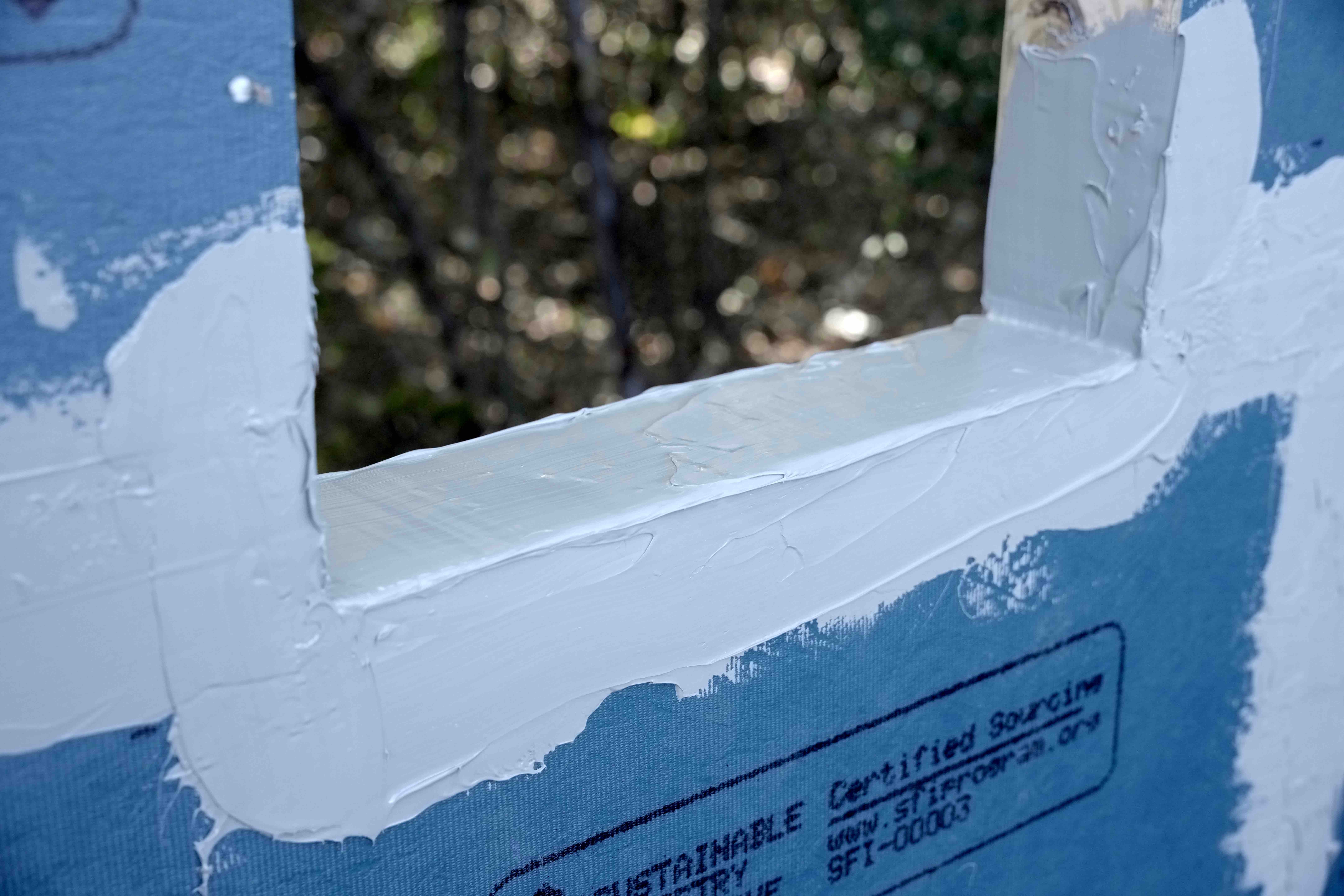Industry Trends5 min
How Flashing Sealant Technology Works to Provide a Tighter Building Envelope
No matter how great a product is, it’s nice to have options that give you the flexibility to diagnose and solve any problems that may arise on the jobsite. The LP Weatherlogic® Seam & Flashing Tape has been a trusted product for years, but now the LP Building Solutions product team is offering a new flashing sealant to help provide builders with an additional convenient option to create a tight building envelope when using LP WeatherLogic® Air & Water Barrier.
What Is LP WeatherLogic® Seam & Flashing Sealant?
LP WeatherLogic Seam & Flashing Sealant is a liquid-applied flashing material certified to AAMA 714-19. As part of the LP WeatherLogic system, the new flashing sealant is the only liquid-applied sealant approved to seal the LP WeatherLogic panel joints.
The sealant is also designed to flash doors, windows, material transitions and penetrations of any shape. "The LP Structural Solutions team is dedicated to delivering better solutions," says Chris Dall, product manager for the growth and innovation team at LP Building Solutions.
Dall explains the LP WeatherLogic Seam & Flashing Tape or LP WeatherLogic Seam & Flashing Sealant—or a combination of both—can be used to seal the seams of LP WeatherLogic panels, depending on what your trades are most comfortable using. Whether you’re building a spec home with an inside corner to the garage or a luxury home with pipes going out to the pool, there are various areas where it may be beneficial to use sealant.

More Applications for LP WeatherLogic Seam & Flashing Sealant
Repairing overdriven nails is another suggested application for LP WeatherLogic Seam & Flashing Sealant. "Builders can't always avoid imperfections in the field, so one of the framers can walk around with a sealant gun and quickly seal any overdriven nails," says Dall. "We try to give you more options."
LP WeatherLogic Seam & Flashing Sealant can be used beyond the walls as well. As a sealant for roof flashing, use it when installing LP WeatherLogic panels as roof sheathing. Be sure to check the installation instructions for specific do’s and don’ts.
LP WeatherLogic Seam & Flashing Sealant contributes to the complete LP WeatherLogic System. "It's like we drafted a new player who has great individual skills, but we are most excited about how they will elevate the entire team," says Dall. "At the end of the day, it's about how we can improve the overall performance of our LP WeatherLogic Air & Water Barrier system."

Be sure to visit the LP WeatherLogic Seam & Flashing Sealant product page for more information and installation tips.
Continue Reading
Resiliency Solutions
5 minIntroducing LP® SmartSide® ExpertFinish® Naturals Collection™: Nature-Inspired Beauty Meets Engineered Performance
We’re excited to introduce the LP® SmartSide® ExpertFinish® Naturals Collection™, a bold new addition to our trusted line of engineered wood siding and trim that delivers the warmth and beauty of nature with the advanced protection and performance builders and homeowners expect.
Labor Solutions
5 minChoosing the Right LP® Structural Solutions Product for Your Build
When it comes to building strong, reliable, and high-performing structures, the materials you choose matter. At LP Building Solutions, we understand that every project, whether it's a single-family home or a multifamily development, requires structural components that meet your needs for strength, durability, and efficiency.
Sustainability Solutions
5 minBuilding a More Sustainable Future with LP Building Solutions
In today's world, sustainability is no longer just a buzzword, it's a blueprint for responsible living and smarter building. As the construction industry seeks ways to reduce its environmental footprint, LP Building Solutions is focused on providing innovative building materials for eco-conscious builders to help reshape what it means to build sustainably
News & Stories3 min
History of Partnership with Gary Sinise Foundation
The LP Foundation is a proud partner of the Gary Sinise Foundation, which supports wounded veterans in several ways. You can learn more about the LP Foundation here.